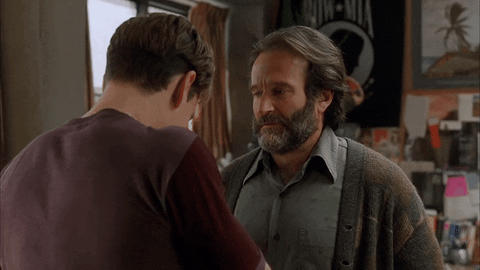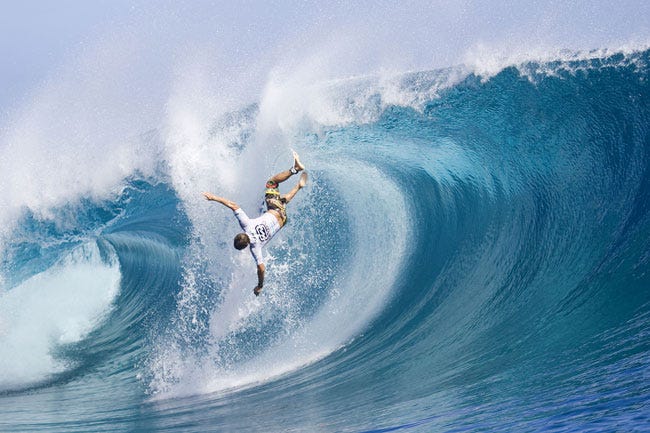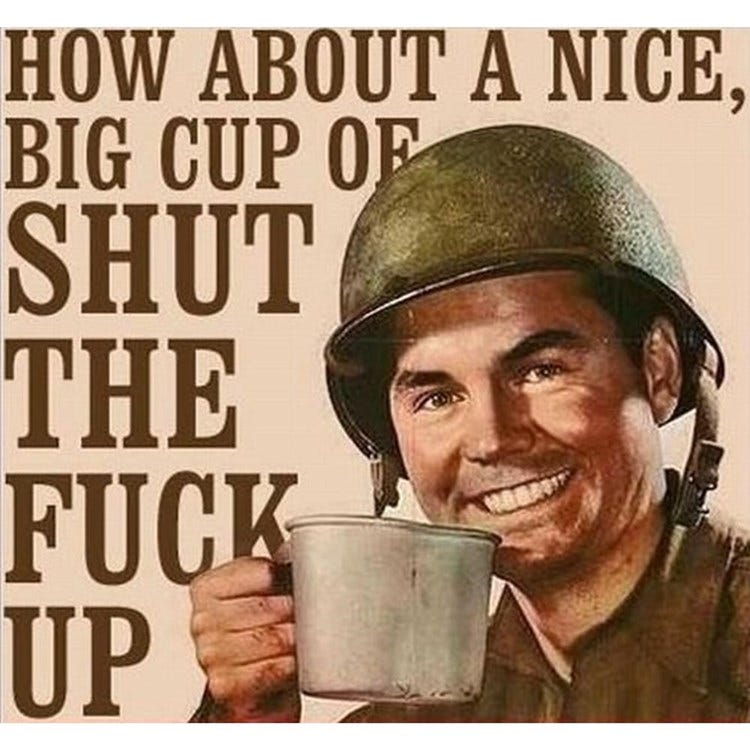#37: Three Top Tips For 2023 / Tip #3
Yes, go chasing [cost] waterfalls
Hello, Quo Vadis Community! Last week we shared Tip #1 on retail media attribution and Tip #2 on Custom Algos. Thanks for all the likes and feedback — your programmatic love is overwhelming! ❤️
Tip #3 today is on working media cost waterfalls. You know the drill. Programmatic advertisers put a dollar into the adtech machine and some advertising comes out the other side. Sometimes very little, sometimes none at all. Perception is reality.
Reading Time: 12 monumental minutes
Today we’re jumping down a waterfall. A cost waterfall. A programmatic supply chain cost waterfall. That means working media, folks!
So let’s get this party started with a little TLC! Go chase those waterfalls!
And for your pleasure (and ours), we asked ChatGPT to turn TLC’s hit song into an adtech masterpiece just for you. The oracle delivered, but we did have to play an executive producer to make a hit tune.
Verse 1: Don't go chasing programmatic ads Please stick to your ad budget, don't go mad The clicks will rise, your CPM will fall You'll wind up on the wrong side of the wall Chorus: Programmatic, programmatic Such a tempting way to advertise But the algorithms can be so opaque Better stick to your business plan, don't make the mistake Verse 2: A/B testing can be your best friend But don't rely on it to the very end Keep track of your metrics, optimize your spend And you'll see your brand on the rise again Chorus: Programmatic, programmatic Such a tempting way to advertise But the algorithms can be so opaque Better stick to your business plan, don't make the mistake Bridge: You can try to beat the system But the players are always one step ahead The key is to find informational balance And your brand will thrive instead Chorus: Programmatic, programmatic Such a tempting way to advertise But the algorithms can be so opaque Better stick to your business plan, don't make the mistake
Working Media = Known Unknowns
Your typical marketer out there in AdTech Land, pounding down free programmatic Kool-aid like it’s a frat party, has no idea what working media really is. Quo Vadis is here to tell you that it’s not your fault.
This “crap” (Marc Pritchard said it best) is complex. In reality, most marketers know what they don’t know about programmatic transparency, but they struggle to bridge the divide failing to get to true knowledge. Finding true programmatic knowledge is hard. It’s like squeezing sand in your hand… the more you squeeze, the more sand slips away.
What have you done about it?
Sure, you hired a consultant or media audit firm to tell you what you wanted to hear. They’ll tell you, “It’s pretty good, not bad at all, keep up the good work, keep paying us fees and we’ll keep serving you Kool-aid.”
Quo Vadis Rule of Thumb: Supply chain cost waterfall exercises are a perfect example for McKinsey’s rule of thumb when they come to a conclusion: “How wrong could we be, and by how much might it change the answer?” Media auditors — and the data they get could be a little wrong — and your answer could be way off the mark. But they are mostly are wildly way off the mark.
And every time marketers make decisions about programmatic based on bad information (the rule, not the exception) adtech players seem to come out ahead. That’s precisely what makes programmatic such a fascinating market.
Michael Kassan said it best, “No conflict, no interest.”
Three types of cost waterfall projects
Our diverse and always-curious Quo Vadis community should think about supply chain cost waterfall projects as three very different types.
Type 1 (Manual): Historical, aggregated data provided manually with excel sheets by media agencies, DSPs, SSPs, and content verification vendors to an overworked underpaid junior consultant who jams into a spreadsheet model with a bunch of calculations and assumptions. After it’s delivered, all the value goes to zero the very next day.
Type 2 (Automated): Getting the actual atomic-level log data on live campaigns from all these same supply chain players, and sending it to a neutral server database that runs an algo to match all the logs to “see” what transparency actually looks like. Go here if you want to see a smidgen of what raw programmatic logs look like in the wild.
Type 3: The same as Type 2, but in this case, a marketer runs its own content verification for bot fraud and viewability. Why?
Found Money
When marketers dive into deep cost waterfall analysis at the log level, they get to what Quo Vadis likes to call “news you can use.” And with high-quality information, they find treasure in the form of “found media money.”
Found money is music to an advertiser’s ears these days. With everyone tightening their ad budget belts in 2023, every incremental dollar of working media has become much more important.
Adtech Investor Tip: Not if, but more like when more and more marketers take the plunge, the resulting waves will crash into some players knocking them down while only a few will ride it like Kelly Slater.
For instance, let’s say you’re Unilever, P&G, or Nestle. You’re used to dropping a few hundred million benjamins of shareholder cash on programmatic ads. Last year, you hired some consultants to run a one-off cost waterfall analysis. Along the way, the consultants read between the client’s lines and massaged the model to say working media is 40%.
It’s really more like 10% (or less), but that’s too low to stomach. Either way, you get a one-off number and some slides that start collecting dust the next day.
Time flies. Now it’s 2023, and your media budget is getting cut by 10% across the board. You’re endlessly in love with your DSP and want to keep your audience targeting romance going strong.
You finally say “enough is enough” and turn to a Type 2 cost waterfall. All that juicy log data is now automatically flowing in line with programmatic bidding. Just like a first kiss, you finally get to “see” transparency for the first time. It’s so thrilling!
With good info on hand, your media agency makes obvious ad campaign changes and your working media goes from 40% to 60%. You’re so amazing now! A 10% budget cut in hard times forced you down a new path, and you ended up 10% ahead! Amazeballs! You’re a hero!
Programmatic Cost Waterfall Step-by-Step
Stay with us. The boring stuff is coming but it’s worth the slog.
Start with the advertiser’s ad budget. Let’s say we have $10 to buy 1000 impressions.
The advertiser’s media agency of record (AOR) has previously put forward a media plan containing all sorts of media buy recommendations.
AORs get paid either on an FTE budgeted basis or on a percentage of media spend that they manage. Let’s say it’s 5%.
When $10 is allocated for programmatic campaigns, the AOR, by definition of its very contract terms across all media it handles, earns $0.50.
That leaves $9.50 in “net budget” for the Agency Trading Desk (ATD) to put into action.
ATDs go by other names like “programmatic operating unit” and other names. Let’s say the advertiser has contracted for a 5% fee on programmatic media management.
If the ATD does not account for its fees beforehand, nobody will know how much is available for bidding. So, we’re left with $9.03 in Funds Available for Auction.
Now the ATD gets to work setting up the campaign. They go hands-on-keyboard and buy some audience segmentation data for say $1.00 CPM.
Next, the DSP accounts for verification costs that also have to come out of available funds, or else later on the DSP won’t know what it has to work with for bidding. Let’s pay a $0.50 CPM.
Ad serving fees also need to be accounted for, so let’s say that’s another $0.25 CPM.
Now we’re left with $7.28 in Funds Available for the DSP Campaign.
But wait, don’t go running off to the auction blocks yet! We still have to account for DSP Tech Fees. That will cost about 10% or $0.73.
That leaves $6.55 in Funds Used to Buy Inventory from an SSP.
The SSP gets its share too. Nobody really knows how much “take-rate” SSPs get, but we can take a stab. For any given advertiser, it depends on how much spending takes place on Google’s SSP “AdX” vs other SSPs who get a piece of the action.
After all these transaction fees, the publisher is left with a measly $4.85.
Let’s say the Publisher is USA Today. Let’s also say USA Today’s “Network” of other sites is in play. These ad network “extension” partners get a 30% revenue share and the remaining amount goes to USA Today as planned.
The advertiser probably ended up running ads in places that it really does not want to be. As long as no one tells mum is the word.
Anyhow, $4.85 inventory gets spent on publisher inventory of various qualities ranging from total crap to something your grandmother would call peachy.
Assuming 50% of what was bought is from non-human bot-generated ad impressions, working media takes a big hit.
Yes… we know. Content Verification vendors tell brand people that bot fraud in programmatic auctions is thumbs up a-okay👍🏼 and less than 1%. We don’t believe it. Do you? Why? Because made-for-advertising (MFA) alone is like water finding its way into many programmatic cracks. MFA is much more than 1%. Put it this way: If Vegas gave you 10-to-1 odds on a minimum $10K bet that MFA is less than 20% in programmatic auctions, would you take that bet? Put another way: If Vegas gave you 10-to-1 odds on a minimum $10K bet that bot fraud is less than 1%, would you take that bet? And if you think "private marketplace" is the answer, then we have a pretty pig with lipstick for you. Want more evidence that something is rotten in Denmark? Check out the recent VastFlux fraud scheme. $12M per day in scammed cash (assuming $1 CPM).By the very definition of MRC low-bar viewability standards, marketers suffer a 50% hit by bidding on and buying tons of ads with zero probability of being viewable. If the act of non-advertising was called advertising then you can call non-viewable ads advertising 🤪
Last but not least, there’s the ultra-silly and totally subjective topic of brand safety. The irony of talking about brand safety in the mystical forest of adtech land is too stunning to even think about. Give it a try. Anyhow, let’s go out on a limb and say non-brand safe impressions tally up to another 20% in total waste.
Voilà! There you have it. What started as $10 real dollars turned into a whopping $0.97 (less than 10% working media) in actual advertising that might have a chance of getting a consumer’s attention and altering their probability of buying some stuff.
Bottom Line for adtech investors: If you look at any other industry (particularly financial markets), you know that regulation (or self-regulatory bodies) focus on maximizing transparency. Regulation tends to make markets much bigger (e.g. we’ll likely see this play out in the post-SBF crypto world). Just because this concept has remained foreign in the adtech world does mean it will last forever. It never does and things like this tend to change during macro troughs. The adtech players that “get it” will more likely remain in the game as it grows. The players that don’t or can’t “get it” will likely die off.
Nested Waterfall
What too few people want to talk about is the waterfall within the waterfall. So, if you really want to get into it — and you should — then get after it.
After a DSP wins an impression (see our post on custom algo to learn more), an ad server has to serve the ad creative. Let’s say that mostly happens with few defects along the way.
Now that ad has to actually render in a browser or app. That does not always happen for lots of reasons both good and bad.
You’re left with what content verification vendors and the MRC call “measurable” vs. “unmeasurable” impressions. Let’s say 60% are measurable.
Now you finally get to what can be counted as viewable or not and hopefully something that resembles an ad your grandmother would call “peachy.”
Log Data Access, Getting Off The Treadmill
Type 1 cost waterfalls are mostly useless except for creating the appearance of doing something about calls for “transparency.” It’s like running on a treadmill — you’re always in the same place and look silly doing it.
Type 2 is the real deal, but that means all those supply chain “partners” need to fork over log data.
Take the 2020 ISBA/PWC cost waterfall study. It took over a year of legal mumbo-jumbo hoop-jumping to get access, and that was backward-looking historical data — not live campaign data.
ISBA’s new report was just released this week. Some progress was made, but a treadmill is still a treadmill.
So, for all you amazing no-fear marketers out there looking to squeeze more out of programmatic in 2023, just follow one simple rule to get the log data flowing.
Having a BATNA is the best place to be. Let’s say you send a nice note to your vendors asking for log data. It goes something like this…
Dear AdTech Partner, As a key pillar of our 2023 programmatic media planning and strategy, we seek to improve our programmatic productivity, cost efficiency, and advertising effectiveness. With these important objectives in mind, we are running an always-on log data ingestion project in Q1 2023. As a valued partner, we appreciate your support and participation. Please provide your log-level data file to seat ID XYZ on a daily basis starting on MM/DD/2023. Thank you for your continued support, Big Love 💓
If their response feels like this…
…then you need a Best Alternative To a Negotiated Agreement. Your best, most powerful BATNA is to pause all spending until they give you what you want. It’s easy. Just log into your DSP and hit the pause button.
Yes, there will be certain actors who will warn you not to pause spending because “it will kill your ROI” or “you’ll lose reach to competitors” and other nonsense.
But then again, if you’re a marketer who thinks your working media is low and can be dramatically improved, then you probably won’t be missing much in terms of “reach” goals. If your working media is that low, then you’re not getting any reach anyway.
The truth will set you free, but it will probably piss you off first. If you ask and don’t receive, then at least you know your “partners” are transparent about not being transparent.
A simple plug-and-play waterfall model
For our Quo Vadis paid subscribers, we built a simple plug-and-play working media model in Google Sheets for you to mess around with. We offer three versions in one spreadsheet:
Standard Waterfall Model.
Standard Waterfall Model with agency kickbacks baked in. It’s what makes the world go around. Yes, agencies need to make ~15% on media spend to be viable partners to clients. Don’t expect much innovation by beating them up on fees.
Working Media on Criteo as a comparative example.
Nested Ad Quality Waterfall Model.
If you’d like to play around with these model, click this link to request access.
If you’re not a paid subscriber and cannot live another day without becoming one, then make it happen today.
Ask Us Anything (About Programmatic)
If you are confused about something, a bunch of other folks are probably confused about the same exact thing. So here’s a no-judgment way to learn more about the programmatic ad world. Ask us anything about the wide world of programmatic, and we’ll select a few questions to answer in our next newsletter.
Join Our Growing Quo Vadis Community
Was this email forwarded to you? Sign up for our monthly newsletter here.
Get Quo Vadis+
When you join our paid subscription, you get at least one new tool every month that will help you make better decisions about programmatic ad strategy.
Off-the-beaten-path models and analysis of publicly traded programmatic companies.
Frameworks to disentangle supply chain cost into radical transparency.
Practical campaign use cases for rapid testing and learning.








